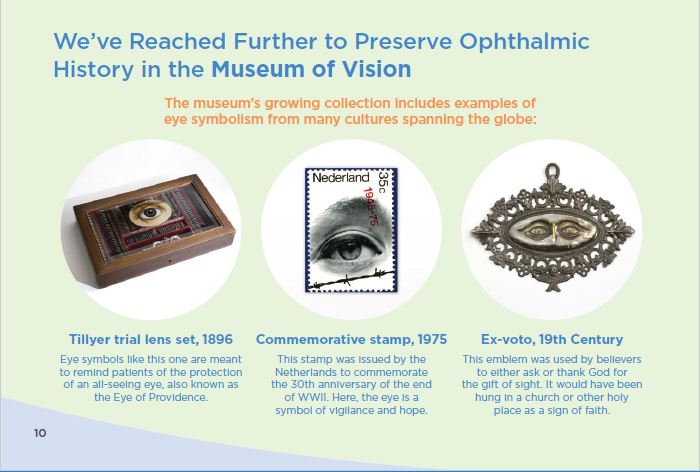Engaging the Public in Our History
From fearsome needles to rare volumes, the Museum of the Eye presented last year’s visitors with visceral history lessons on several ophthalmic milestones.
The museum’s newest exhibit, “Cataract,” explores the history of cataract surgery in honor of phacoemulsification’s 50th anniversary. At AAO 2017, the exhibit featured artifacts from all over the world — including Roman couching needles and the first commercial phacoemulsification unit on the market. The featured Cavitron-Kelman phacoemulsifier, manufactured only between 1971 and 1974, was donated by the late Barrett G. Haik, MD.
The museum also received two major book donations in 2017: an extremely rare volume of Georg Bartisch’s Ophthalmodouleia: das ist Augendienst, published in 1583, and a second edition published in the 1600s. Donated by Christopher F. Blodi, MD, and Norman B. Medow, MD, respectively, they represent the first ophthalmic text published in German and the first extensively illustrated book for any surgical specialty.
The Museum of the Eye is the history and archives department of the Academy. With Foundation support, its 38,000-piece collection proudly serves as an educational resource for Academy members, medical historians, researchers and the public. In 2017, more than 100,000 people visited aao.org/museum. Each visit was a chance to share our work and celebrate our legacy — raising the profile of ophthalmology within the broader culture, and reaching further to connect with the public we serve.
Visit the museum’s new website at aao.org/museum.
